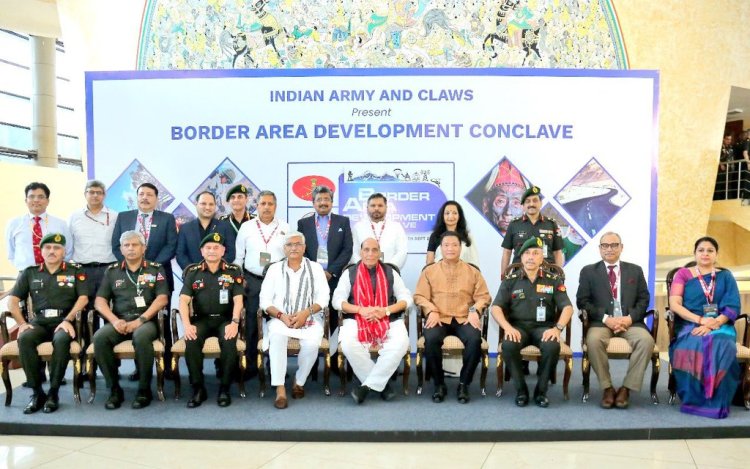In a press conference held in New Delhi on September 11, 2024, Raksha Mantri Shri Rajnath Singh underscored the Prime Minister Narendra Modi-led Government’s commitment to the holistic development of India’s border villages. Describing these areas as the country’s "first villages" rather than remote locations, Shri Singh emphasized that effective border area development is crucial for addressing the country’s geo-strategic challenges.
Achievements in Border Development:
Shri Rajnath Singh highlighted the significant strides made over the past decade. The Border Roads Organisation (BRO) has constructed over 8,500 kilometers of roads and more than 400 permanent bridges. Notable infrastructure projects include the Atal Tunnel, Sela Tunnel, and the upcoming Shikun-La Tunnel, expected to be the world’s highest. The ongoing 220 Kilo-Volt Srinagar-Leh Electricity Line aims to connect Ladakh’s border areas to the national grid, while improvements are also underway in the northeastern states’ transmission and distribution infrastructure. Additionally, the Bharat-Net broadband project has provided high-speed internet to over 1,500 villages, with more than 7,000 border villages connected in the past four years.
Focus on Basic Infrastructure:
Shri Singh stressed that roads and electricity are foundational for any region’s development. He praised the ongoing efforts not only for enhancing military readiness in sensitive regions but also for improving the lives of border residents. Collaboration with state governments is vital in this regard.
Promoting Tourism:
The Raksha Mantri highlighted the role of tourism in catalyzing development in border regions. Since the current government’s tenure, there has been a notable increase in tourist footfall in Ladakh, Sikkim, Arunachal Pradesh, and Kashmir, resulting in job creation and local economic growth. The government’s initiatives are focused on transforming Jammu and Kashmir into a prominent tourist destination.
Reverse Migration and Development Initiatives:
Shri Singh spoke about the positive impact of border area development, particularly noting the phenomenon of reverse migration. He cited Huri village in Arunachal Pradesh as a successful example of civil-military collaboration leading to development and migration reversal. The Vibrant Village programme aims to further this progress by transforming northern border villages into model communities through improved connectivity and infrastructure.
Indian Army’s Role:
Shri Singh commended the Indian Army for its role in developing border areas. The Army’s efforts in building roads, bridges, and schools, along with encouraging youth participation through the NCC, have been integral to border area development.
Tourism and Security Integration:
Minister of Culture & Tourism, Shri Gajendra Singh Shekhawat, emphasized that tourism growth in border regions must align with security and infrastructure development. The Ministry of Tourism’s roadmap focuses on Infrastructure Development, Sustainable Practices, and Community Engagement to support and enhance tourism in these areas.
Remarks from State and Military Leaders:
Arunachal Pradesh Chief Minister Shri Pema Khandu lauded the Vibrant Villages programme for its transformative impact on the state’s border areas. Chief of the Army Staff General Upendra Dwivedi highlighted that border area development is crucial for national security. He outlined a comprehensive vision that includes infrastructure development, smart borders, economic growth, tourism, and disaster management.
Conclave Outcomes:
The Border Area Development Conclave, organized by the Indian Army in collaboration with various ministries and the Government of Arunachal Pradesh, aimed to create a sustainable and secure future for India’s border regions. The event focused on improving infrastructure, enhancing cross-sector collaboration, and bridging the digital divide to improve access to essential services.
The event underscored the importance of civil-military cooperation in fostering development and security in border regions. By integrating military and civilian efforts, the Government of India aims to create thriving, secure border communities that contribute to national security and regional growth.











